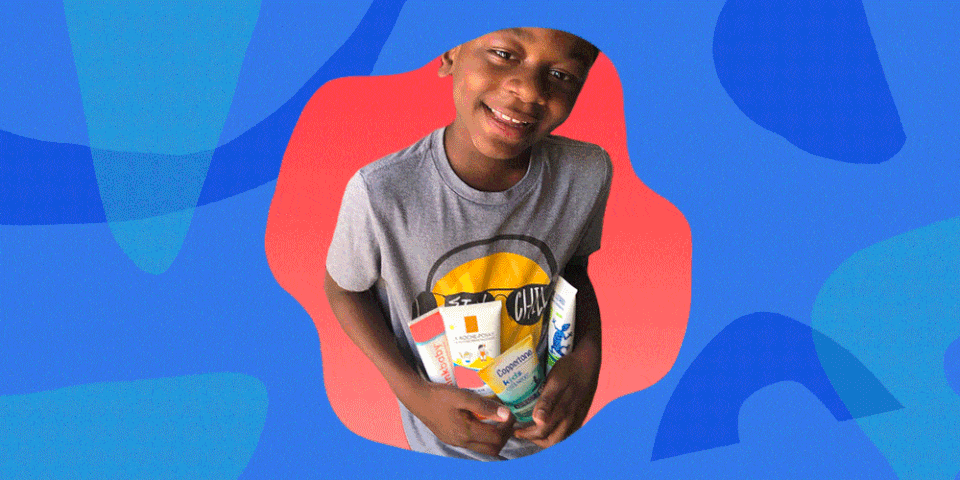We Tested These Sunscreens for Kids on My 7-Year-Old’s Eczema-Prone Skin, and Here’s What Happened







We Tested These Sunscreens for Kids on My 7-Year-Old’s Eczema-Prone Skin, and Here’s What Happened
As a parent, you're in a constant whirlwind trying to figure out which product is the best for your little one. When it comes to sunscreen for kids, you'll want to pick products that are baby-safe with delicate skin in mind, free of toxins and chemicals, and not a complete mess to apply. We are here to guide you to the best baby- and kid-friendly sunscreens on the market that'll make sun play safe.
The Best Kids Sunscreen for Dark Skin
- Best Application: Hello Bello Mineral Sunscreen Stick
- Most Cast-Free: Coppertone Kids Clear
- Most Sweatproof: Think Baby Sunscreen
- Best Full-Coverage: Neutrogena Pure and Free
- Best Texture: Blue Lizard Kids Sunscreen
- Best Absorption: Baby Bum Sunscreen Spray
What to Consider When Shopping for Kids Sunscreen
For starters, your little ones should not be wearing any type of topical sunscreen product until they are at least 6 months old, according to Debbie Palmer, D.O., a New York dermatologist and author of Beyond Beauty. But that doesn’t mean your baby can’t get in on the summertime fun! Before they hit that age, Palmer recommends protective clothing like rash guards, hats, and sunglasses, as well as seeking shade periodically.
According to Dr. Joshua Zeichner, director of cosmetic and clinical research at Mount Sinai Hospital in New York, our children's skin is far more sensitive than adults'. Therefore, opting for sun ray-blocking ingredients — like zinc oxide or titanium dioxide instead of chemical filters — is essential. Both Dr. Zeichner and Palmer suggest tear-free, mineral-based, non-greasy formulas to avoid possible skin irritation.
To figure out the best application, Dr. Zeichner says that the best rule of thumb is to choose a sunscreen application that your kids will actually want to use. Whether it's a sunscreen stick or a spritz, it's more important to make sure that your child wants to apply it ... and does so correctly and consistently.
Sunscreen and Melanin
There is a misconception that Black kids and adults don't need to prioritize sun safety, and that more melanin means there isn't a need for sunscreen. Dr. Zeichner says that is a total myth: While darker skin tones and more melanin do offer some level of UV light protection, it is in no way a substitute for sunscreen.
Over the years, sunscreen shopping has been demystified, thanks to the Skin Cancer Foundation and the nonprofit Environmental Working Group. The Skin Cancer Foundation has a blue square Seal of Recommendation on the products that they trust, making shopping super easy. The Environmental Working Group has an online database where they assign a rating to various products in order to measure their toxicity level and safety.
What to Look For in Kids Sunscreen
When buying sunscreen, you should also keep ingredients in mind, since freshly applied sunscreen can be harmful to our ocean's disappearing coral reefs — and our coral reefs are beyond important.
As a kid, I never wore sunscreen and believed my deep brown skin was immune from the sun rays. For my own Black child, I've admittedly been inconsistent with his sunscreen application because of this harmful falsehood that Black skin doesn't need to be protected from the sun. With that being said, my 7-year-old son Miles and I tested seven sunscreens for kids over the course of one full month to determine which worked best.
How We Tested
Over the course of one month, Miles and I slathered on a different sunscreen. From his face and hands to his arms and legs, we tested out seven different formulas.
One of the most important factors for choosing the right sunscreen for kids is making sure it is one they actually want to use. Whether it's the texture or the actual application, finding the formula that Miles had no problem using was essential.
After every application, we both examined the following criteria:
- What do we think about the texture?
- How does it smell?
- How easy is it to apply by himself?
- Is it sweatproof?
- Does it absorb into his skin instead of leaving a greasy residue?
- Is there a white cast left behind?
Along with that criteria, as his mom, I wanted to pay attention to how well the sunscreens worked with his melanated and eczema-prone skin.
The results are in, so take a look at the best sunscreens for kids below, and find the one they're actually going to want to put on.
Learn more about how we test products, from the questions we ask our testing team, to the types of products we feel are actually worth testing, to the overall time we put in to our testing process.
We tested out kids sunscreens from the top brands to see which ones work best on dark skin. Check out our reviews of the best kids sunscreen for dark skin